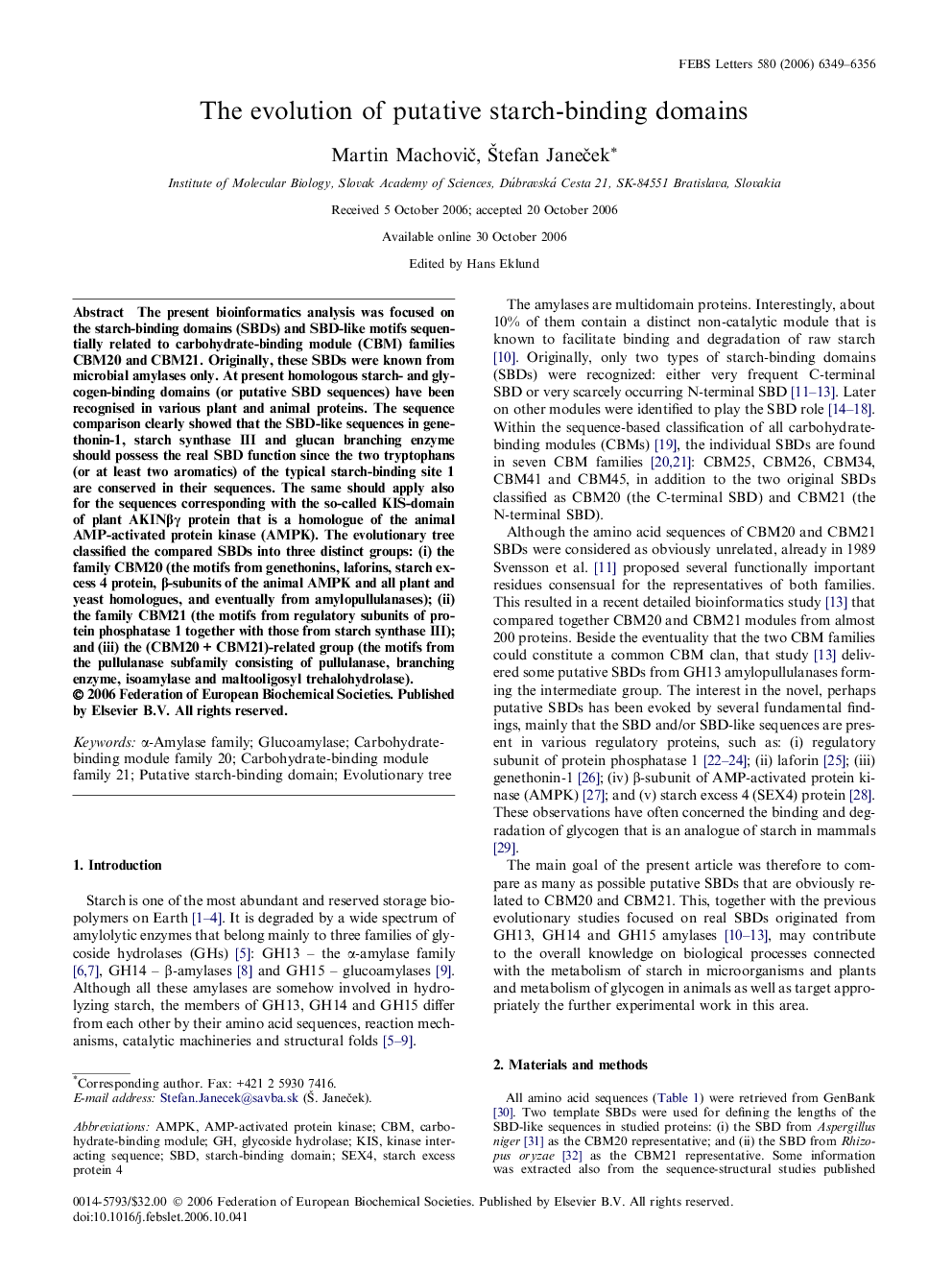| Article ID | Journal | Published Year | Pages | File Type |
|---|---|---|---|---|
| 2052334 | FEBS Letters | 2006 | 8 Pages |
The present bioinformatics analysis was focused on the starch-binding domains (SBDs) and SBD-like motifs sequentially related to carbohydrate-binding module (CBM) families CBM20 and CBM21. Originally, these SBDs were known from microbial amylases only. At present homologous starch- and glycogen-binding domains (or putative SBD sequences) have been recognised in various plant and animal proteins. The sequence comparison clearly showed that the SBD-like sequences in genethonin-1, starch synthase III and glucan branching enzyme should possess the real SBD function since the two tryptophans (or at least two aromatics) of the typical starch-binding site 1 are conserved in their sequences. The same should apply also for the sequences corresponding with the so-called KIS-domain of plant AKINβγ protein that is a homologue of the animal AMP-activated protein kinase (AMPK). The evolutionary tree classified the compared SBDs into three distinct groups: (i) the family CBM20 (the motifs from genethonins, laforins, starch excess 4 protein, β-subunits of the animal AMPK and all plant and yeast homologues, and eventually from amylopullulanases); (ii) the family CBM21 (the motifs from regulatory subunits of protein phosphatase 1 together with those from starch synthase III); and (iii) the (CBM20 + CBM21)-related group (the motifs from the pullulanase subfamily consisting of pullulanase, branching enzyme, isoamylase and maltooligosyl trehalohydrolase).
